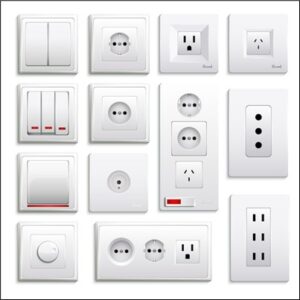Introduction – Replace your electrical panel now, whether you’re getting your house ready to sell or you’re worried about those strange electrical problems you’ve been experiencing lately.
The cost of replacing an electrical panel is minimal, but the benefits in terms of convenience and safety for the home are enormous. Not certain if a panel replacement is required? Keep an eye out for these indicators that your electric panel needs to be replaced.
- Circuit Breaker Constantly Trips – It’s more than a hassle when one of your circuit breakers keeps tripping. It’s quite risky. This warning sign alerts you to a problem with your home’s electrical panel, the breaker itself, or the wiring. Have an electrician examine your wiring system and substitute the appropriate component in any of these scenarios.

- You Reside in an Aged House – Actually, the headline of this sign should read, “You reside in an older home.” Electrical panels have a finite lifespan, like other home appliances, and occasionally need to be repaired as a matter of routine. Electric panels typically last 30 to 50 years, roughly. This implies that even a home built in the late 1980s may have an outdated electrical panel, placing your home at risk of an accidental malfunction.
- Lights flicker – Your lights are not flickering because of a malfunction with the light source when you turn on specific appliances. Instead, it’s a warning that you’re attempting to pull more power than your panel can safely manage. So, think about upgrading your electricity service.
- Electrical Panel Has a Bad Odor – Any offensive odour coming from your electrical panel has to be looked into as soon as possible. It could be associated with:
Charring. Look for burned breakers or melted wiring insulation.
Rust. On the panel, look for rust, which denotes water infiltration. Electricity + Water = Danger! After locating and removing the moisture source, you’ll need to have a replacement panel put in.
- Electrical Panels that Are Too Small – Speaking of power, many electrical panels are really too little for what is required nowadays. The typical household power rating was once 50 amps; subsequently, it rose to 100 amps. In order to accommodate all of our power-hungry appliances, modern homes are fitted with electrical panels that are 200 amps or higher. We advise adding a new electrical panel assembly to your home remodeling plans. By doing so, you’ll be ready to handle the demands of a growing home and be future-proof. Additionally, you’ll be increasing the worth of your home for the time when you intend to sell it.
Conclusion – Safety is essential when it comes to your home’s electrical wiring, as electric supply networks are the third most common reason for house fires in the US. That’s just one of the many causes it’s crucial to inspect and maintain the electrical systems in your home frequently. In particular, the electrical boards are crucial. Along with broken wiring and old appliances, antiquated electrical panels are among the most prevalent electrical risks in homes and businesses.

